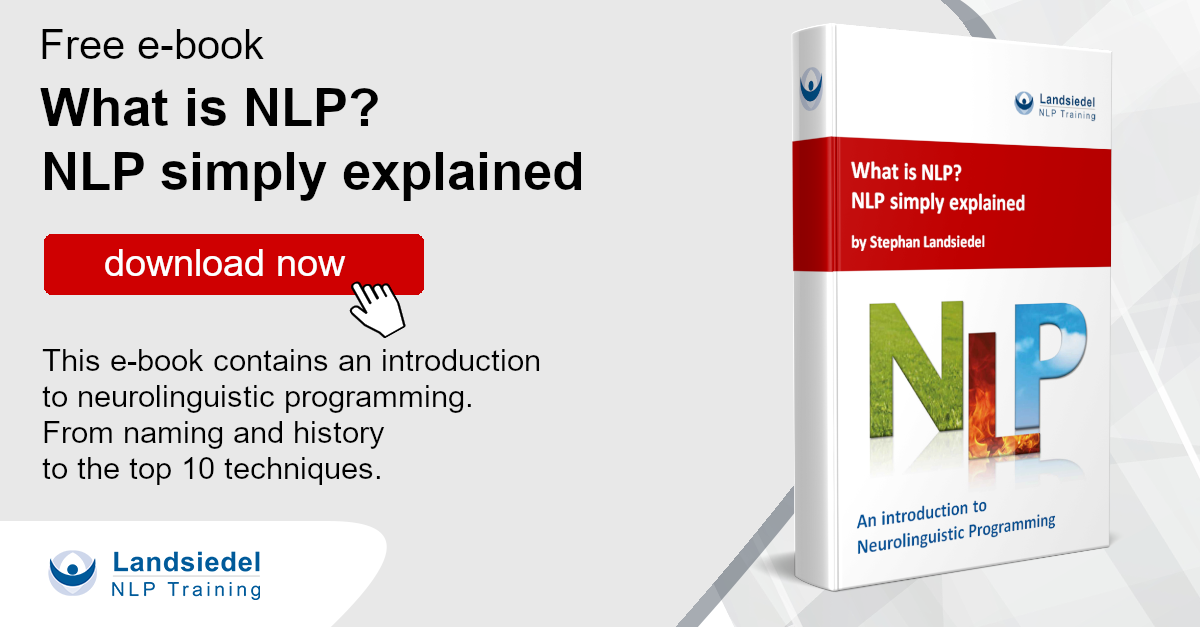Change of a Belief
A strategy to discard limiting beliefs and adopt new beliefs.
- Person A identifies some belief about himself that he does not like, some belief without which, if he did not have it, he would have more flexibility in behaviour - more choices. She does not communicate the content of faith B and C.
- Person B works out the submodalities of strong, unwanted faith.
- A then identifies any option where any alternative is acceptable, such as "I could have fish and chips for dinner, or maybe I find something else on the menu that would be more tempting. It does not matter which one I choose". This is the belief we call wishy-washy.
- B works out the submodalities of wishy-washy.
- B then leads A through the submodalities of the unwanted faith, transforming one by one into the submodalities of wishy-washy. Determine which change makes the biggest difference. Make sure to restore the submodalities to their original form before proceeding with the next change.
- A then identifies a faith she wants to have, which would be more useful than the old faith. This new faith is put into positive terms, it is seen as a process and not a goal. Follow up with an ecology check: "How would this faith, if she had it, affect others; her work? Is the faith in line with her values and the values of those close to her?" If necessary, modify the new faith to meet these conditions.
- Transform the new faith into the submodalities of wishy-washy.
- Then B (using the notes from step 5) instructs A how to make the old strong faith weaker and then bring it back as wishy-washy. For example, if the submodality that caused the greatest change in step 5 was distance, B would instruct A to move the old faith further away and then return it to the same distance as the wishy-washy.
- Then, let the new faith (images and sounds) shoot into the configuration of the old faith.
- Do a test and a future pace. B asks A what she now believes about herself. If A has this new faith, what will she do that she could not do before? A goes through a sequence of the new behaviour.
